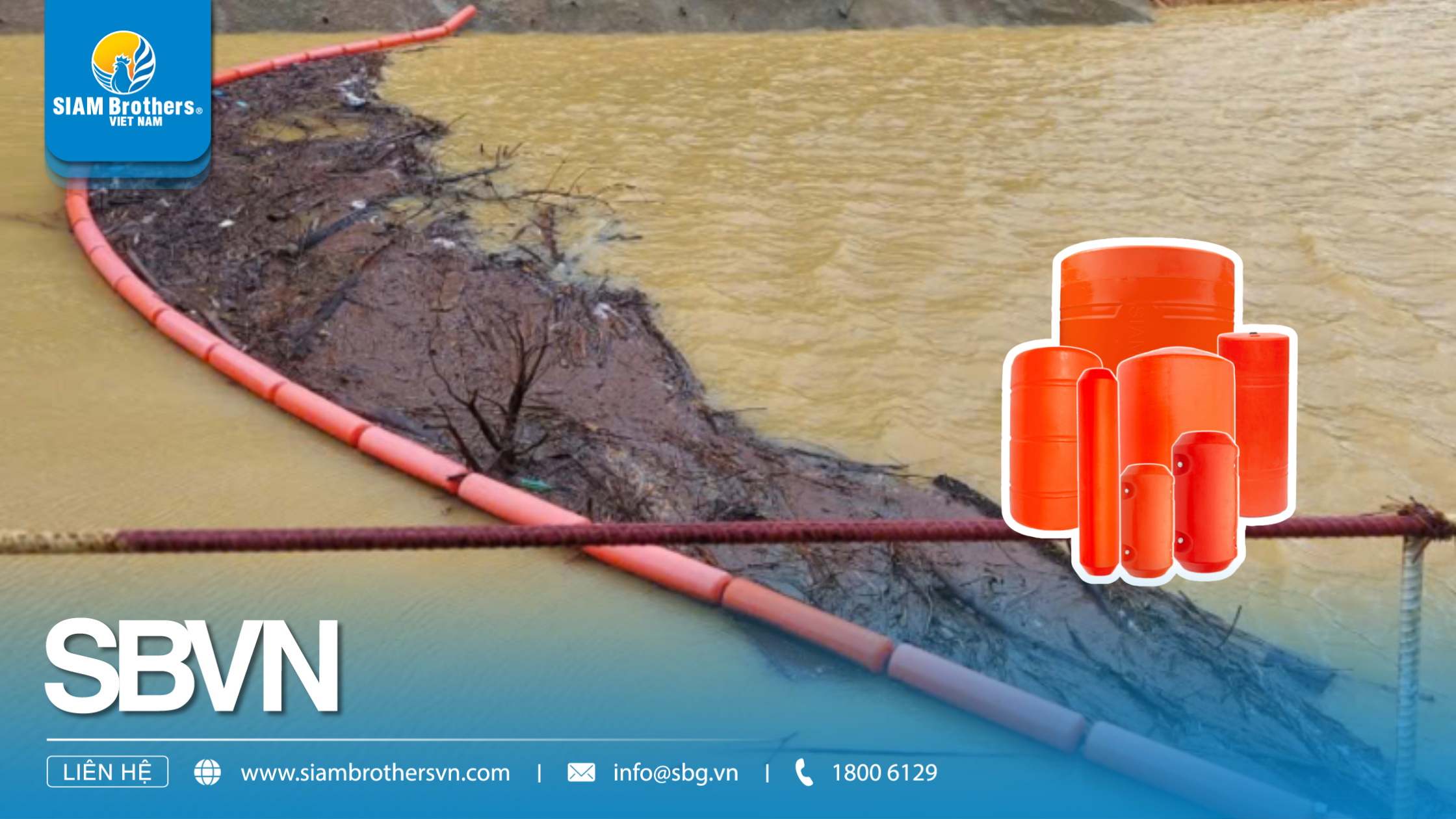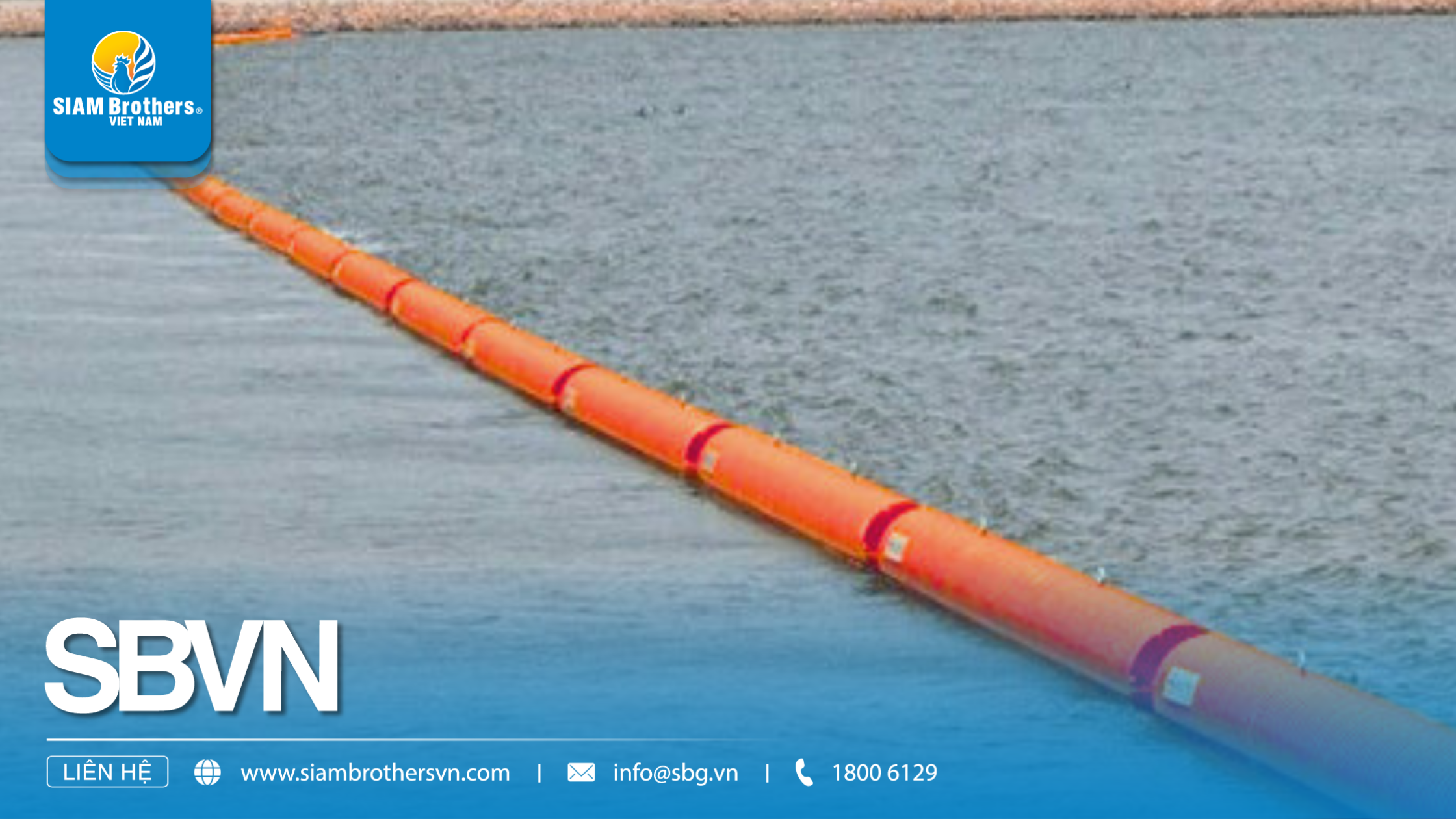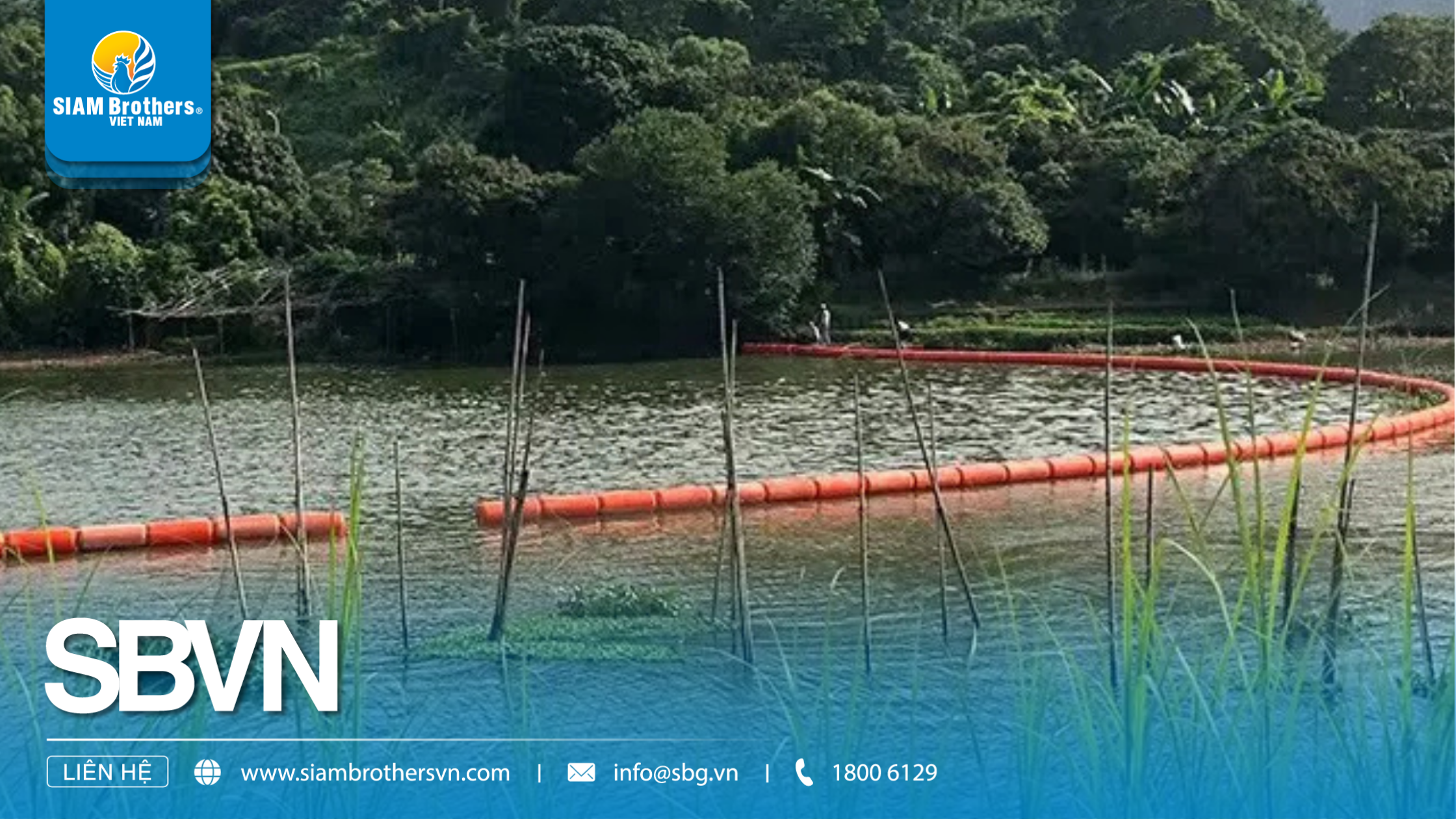Floating waste is not only an eyesore but also a serious threat to aquatic ecosystems—both in urban and rural areas. As plastic pollution becomes increasingly difficult to manage in rivers, canals, lakes, and wastewater treatment facilities, trash booms (also known as floating trash barriers) have emerged as one of the most efficient, low-cost, and easy-to-deploy solutions for environmental protection.
More than just a mechanical barrier, a floating trash boom helps reduce plastic pollution, supports automated waste collection, and enhances the effectiveness of water conservation efforts. So, what exactly is a trash boom? How is it constructed, and where is it commonly applied? Join SIAM Brothers Vietnam as we explore this innovative product and uncover why it’s becoming the go-to choice for environmental projects, contractors, and infrastructure investors alike.
1. What Is a Floating Trash Boom?
A trash boom is a floating device placed on the water surface, designed to intercept and collect floating debris such as plastic waste, leaves, bags, bottles, and other refuse before it spreads downstream. This simple yet highly effective solution serves several purposes:
- Prevents debris from entering stormwater drains and clogging waterways
- Blocks waste from reaching estuaries and coastal areas
- Facilitates centralized collection, reducing manual cleaning costs

1.1 Key Features of Modern Trash Booms
Modern trash booms, especially those made from virgin HDPE by SIAM Brothers Vietnam, offer a range of exceptional advantages:
- High buoyancy and stability: Maintains position even in fast-moving or turbulent water, thanks to its smart design
- Durability under harsh conditions: Premium HDPE resists UV rays, chemicals, and natural corrosion
- Easy to install and relocate: Modular segments can be extended to fit various water widths; simple to transport or disassemble
- Aesthetically pleasing design: Uniform colors and modern look, suitable for both urban infrastructure and eco-parks
- Low operating costs: No electricity required—uses natural water flow, minimizing energy and labor
1.2 When to Use a Trash Boom?
Trash booms are suitable for a wide range of applications, including:
- Urban rivers and lakes: Block waste near bridges, drains, or residential areas
- Wastewater treatment plants: Trap debris before water enters the treatment system
- Fishing ports and industrial zones: Prevent industrial waste from entering natural water bodies
- Eco-tourism sites and aquatic reserves: Protect aquatic ecosystems while preserving visual appeal
2. Structure of a Standard Trash Boom System
A typical floating trash boom system includes three main components, all designed for flexibility and ease of maintenance:
2.1. Main Floating Units
- Constructed from virgin HDPE, offering corrosion, UV, and impact resistance
- Hollow interior for enhanced buoyancy and stable positioning—even in turbulent flow
2.2. Trash Deflection Panels (Netting or Solid Screens)
- Attached beneath the floats, made of plastic mesh, stainless steel, or technical fabric
- Prevents debris from passing underneath, ensuring effective waste collection in one location
2.3. Anchoring and Connection System
- Modular connectors, anchor ropes, fixed poles, and stainless steel hooks
- Keeps the boom in position, preventing movement during strong currents

2.4 Notable Engineering Features
Beyond simply connecting floats and nets, SIAM Brothers’ trash booms are engineered for superior performance:
- Flexible modular structure: Easily extended or reduced depending on water width
- High tensile strength: Tested in swirling currents and areas with high debris loads
- UV- and chemical-resistant: Average lifespan of 5–10 years under normal conditions
- Low-maintenance design: Components are replaceable without dismantling the entire system
2.5 Designed with Sustainability in Mind
Every detail of the trash boom structure is developed with environmental goals in focus:
- Minimizes plastic waste leakage into rivers and oceans
- Supports centralized waste collection and reduces manual labor
- Preserves both the aesthetic and ecological integrity of urban waterways
3. Real-world Applications of Floating Trash Booms
3.1 Where Should Floating Trash Booms Be Installed?
Depending on the flow characteristics and surrounding environment, floating trash booms can be flexibly applied in various areas:
- Urban Rivers, Canals, and Residential Waterways
- Prevent debris from flowing into estuaries or accumulating at large drainage points
- Minimize blockages and help maintain a cleaner, healthier living environment
Landscape Lakes and Ponds
- Keep the surface of water bodies clear of floating waste, protecting fish and aquatic life
- Preserve the aesthetic appeal of public infrastructure and new urban developments
Drainage Channels, Weirs, and Outfalls
- Intercept waste at the source to reduce the burden on downstream filtration systems
- Enable scheduled waste removal without disrupting infrastructure
Wastewater Treatment Plants and Industrial Zones
- Prevent pipe blockages and protect settling tanks from solid waste
- Enhance the overall performance of water treatment operations
Eco-tourism Areas and Lakeside Resorts
- Boost the site's environmental reputation and appeal to eco-conscious visitors
- Support green building certifications and sustainable operation standards

3.2 Case Studies from Actual Projects
At SIAM Brothers Vietnam, we have successfully implemented multiple floating trash boom systems for public utilities, factories, and large-scale infrastructure investors across the country.
- Primary Canal Project (Ho Chi Minh City): Prevented over 300 kg of waste per day during rainy season, significantly reducing sanitation costs
- Ecological Lake Installation (Dong Nai): Maintained water clarity and prevented blockages at intake points for pumping stations
- Food Processing Plant (Long An): Protected wastewater treatment systems before discharge into the natural environment
4. FAQs – Frequently Asked Questions About Floating Trash Booms
4.1 How Many Types of Trash Booms Are Available?
Trash booms are typically classified by:
- Float design: round, square, or oval
- Module length: 1 meter, 2 meters, or customized
- Debris barrier type: mesh screen, rigid panel, or hybrid
- Depending on the application (e.g., large rivers, small ponds, urban drains), SIAM Brothers provides tailored solutions to meet each project's unique requirements.
4.2 Can Trash Booms Be Installed in Fast-moving Water?
Yes. High-quality floating trash booms are designed to withstand strong water currents, thanks to:
- Virgin HDPE construction with superior mechanical durability
- Secure anchoring systems and flexible modular joints
- For areas with especially strong flow, we recommend an on-site survey to determine the best system configuration.
4.3 What Maintenance Is Required for Floating Trash Booms?
- Regularly clean the float and barrier net to prevent sediment and waste build-up
- Inspect modular joints and anchor lines every 3–6 months
- Thanks to the use of high-grade HDPE, the average service life ranges from 5 to 10 years with minimal maintenance and no need for full replacement.
4.4 Can the Length of a Trash Boom System Be Adjusted After Installation?
Absolutely. All SIAM Brothers trash boom systems are modular by design:
- Easy to assemble, extend, or shorten
- Ideal for both pilot projects and future expansion needs
4.5 Are Floating Trash Booms Environmentally Friendly?
- 100% Yes. Our products are made from virgin HDPE, free of toxic substances, and recyclable at the end of their life cycle.
- With a passive floating design that operates without electricity, they contribute to CO₂ emission reductions during use.

Why Choose Floating Trash Booms?
As urban rivers, lakes, and drainage systems face increasingly complex waste pollution challenges, floating trash booms offer a simple yet sustainable solution. From easy installation and flexible design to reliable operation, these devices not only control waste but also help:
- Improve aquatic ecosystems
- Enhance urban aesthetics
- Reduce operational costs significantly
Instead of reacting to environmental damage, investing in trash boom systems is a smart, proactive strategy to protect our waterways at the source.
Looking for an Efficient Trash Control Solution?
Contact SIAM Brothers Vietnam today – the leading manufacturer and supplier of high-quality floating trash booms, trusted by hundreds of projects both locally and internationally.
Source: SIAM Brothers Vietnam
Contact us:
Address: 5th floor, VRG Building, 177 Hai Ba Trung Street., Vo Thi Sau Ward, District. 12, Ho Chi Minh City, Vietnam
Tel: (+84) 28 38 912 889
Hotline: 1800 6129
Facebook: www.facebook.com/siambrothersvn
Email: info@sbg.vn
YouTube: youtube.com/@siambrothersvietnam1728
X: x.com/sbvnjsc
OA Zalo: zalo.me/1402339229697925373
App SBVN ID:





